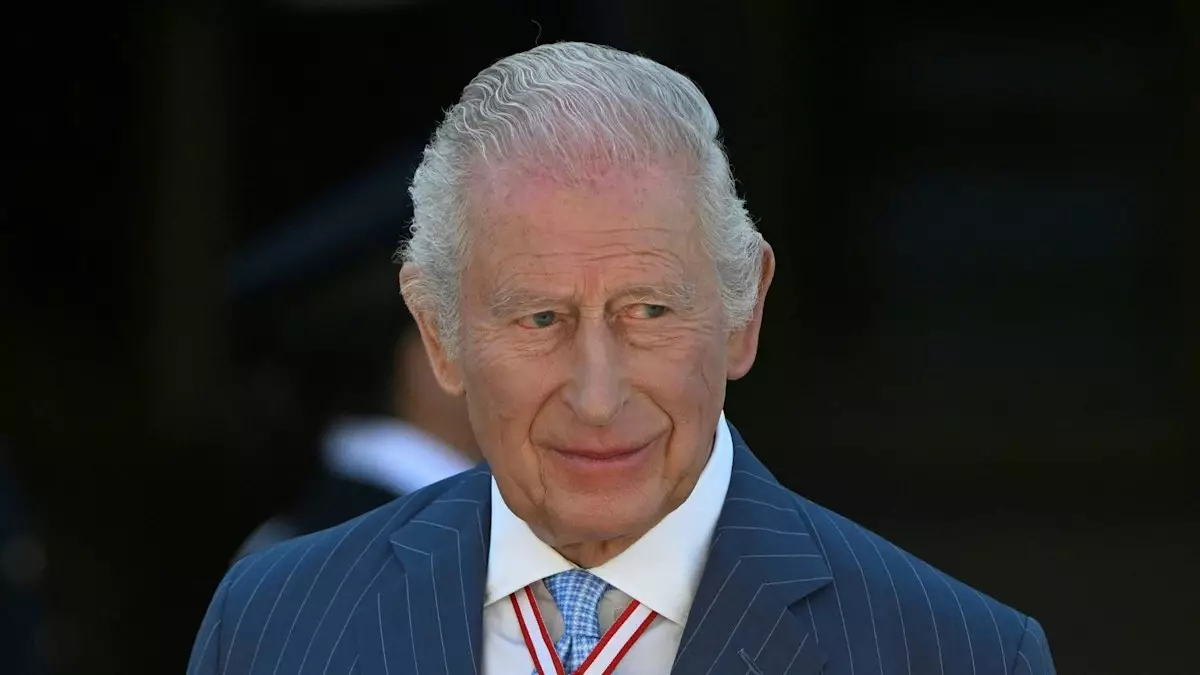King Charles III is a figure who embodies both tradition and evolution. Recently spotted smiling and waving to admirers as he arrived at St. Mary Magdalene Church in Sandringham, his demeanor speaks volumes about his approach to royalty. At 76, Charles has taken on the mantle of leadership with grace and warmth, a stark reminder of the enduring connection the monarchy can nurture with its subjects. The absence of his wife, Queen Camilla, which raised some eyebrows, highlights the delicate dynamics of royal life, where personal health and public duty often intertwine.
The sight of Charles in a sharp dark grey suit, crisp white shirt, and formal tie was not just about aesthetics; it encapsulated the seriousness with which he approaches his role. His stylish appearance serves as a testament to the respect he has for the occasions he attends, while the lack of his wife by his side drew attention to the balance that royal partnerships must strike in the public eye. This moment underscored a broader narrative—the ongoing adjustments the royal couple is making within the constraints of the public eye and the personal challenges they face.
Busy Calendars and Living in the Moment
The King and Queen have recently returned from an intense schedule of engagements in Canada, suggesting that their workload is far from light. After performing a plethora of activities, including the state opening of Parliament where Charles delivered a heartfelt 26-minute speech, the break from royal duties may have been necessary for King Charles. The royal aide’s commentary on the couple’s activities sheds light on the mounting pressures they manage while juggling numerous public engagements.
The Queen’s absence from Sunday’s service could be interpreted as a prudent move, especially with a demanding summer calendar looming. Both Trooping the Colour and Royal Ascot approach, not to mention an official visit from President Macron, demand their energies be preserved. In a world where the monarchy often faces scrutiny for being out of touch, acknowledging the need for rest reflects a modern approach to royal responsibilities. It shows a sensitivity toward mental and physical health, a lesson that transcends the royal lifestyle and strikes a chord with the public.
The Canadian Reception: A Bond Renewed
The recent visit to Canada has proven to be a significant moment for King Charles III, with the tips of history taking a new twist in the form of public reception. According to reports, the warmth and enthusiasm from Canadians moved him. This interaction is not merely ceremonial; it suggests a revitalization of the bond between the monarchy and realms that may feel distant. Modern monarchies thrive when they cultivate engagement that feels authentic and meaningful to their people. The King’s visit appears to have achieved just that, reflecting on the strength of historical ties and family bonds.
Royal aides emphasize that for Charles, visiting a territory where he is recognized as King but has yet to establish a palpable presence, represents a chance to recalibrate relations. His emotional farewell message from Canada was not only a sign of gratitude but also a reflection of reciprocal affection. It suggests that the monarchy is at a crucial juncture where recognition and sentiment can mold future relationships with Commonwealth nations.
Combating Adversity with Monopoly on Normalcy
Amid these engagements and the challenges posed by his health—specifically cancer—King Charles III exemplifies a resolve that seems unwavering. His determination to manage his health while engaging with the public hints at a larger narrative of coping with adversity while fulfilling royal duties. Rather than retreating into the bureaucracy typical of royal protocol, Charles aims to live life as normally as possible.
This philosophy of facing illness head-on while embracing the responsibilities of kingship breaks down barriers between the royal persona and the human experience. The acknowledgement that medical advancements can facilitate a semblance of normality speaks volumes about the King’s commitment to his role and a refreshing outlook on health challenges. It is a narrative that encapsulates the essence of leadership—overcoming personal battles while remaining a beacon of hope and humanity to others.
Such insights into King Charles’s life and duties paint a unique picture of a monarch working earnestly to maintain connections with the public while navigating the complexities of modern royal life.

Leave a Reply